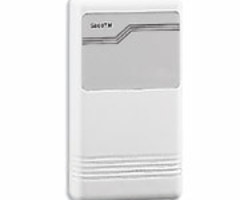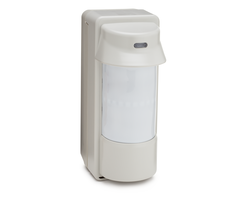What Frequency Do the 5800 Sensors Operate at?
The Honeywell 5800 Series wireless devices operate at a frequency of 345 MHz. The Federal Communication Commission (FCC) assigns radio frequencies and ensures that all RF devices made to operate in the United States do so safely and efficiently, with a minimum of interference between them.
When adding wireless security or life-safety devices to your home or business, several factors are important to consider. These factors include reliability, battery life, transmitting range and the potential for interference.
Reliability: You should always make sure that your wireless devices are reliable, especially those used as security and life-safety devices. Honeywell’s 5800 series technology has been used for more than 20 years and is very reliable when properly installed based on the mounting instructions for the respective device. Most of these devices have a transmitting range of about 200 feet, with a few offering a shorter or longer range. Check the specifications on each device to determine its transmitting range.
Battery Life: It is also important to consider battery life. iIf you have 20 wireless devices that need to have their batteries replaced every year, it can quickly add up, both in time and money. Honeywell's 5800 Series devices come with long-life Lithium batteries. The average battery life is 3 - 5 years, depending on how often the device actually transmits. For example, a sensor on a window that is rarely opened may achieve a much longer battery life. When the time comes to replace batteries, be sure to use only the brands and models recommended by Honeywell. These will be listed in the installation instructions for each wireless device.
Transmitting Range: As noted above, most of the 5800 Series devices have a nominal transmitting range of about 200 feet. Some devices, like the 5811 at 175 feet, have a slightly shorter range, and others, like the 5800Micra at greater than 500 feet, have a longer range. Arming/disarming key fobs and bi-directional wireless devices are both rated at about 50 feet. Honeywell also offers the 5800RP. This repeater requires power, but it does not have to be wired to the control panel. By mounting it between the receiver and the transmitter that is having issues, you can extend the wireless range. For a device with a 200 foot transmitting range, the repeater can extend the range up to 400 feet. For a device with a 50 foot range, the repeater can extend the range up to 100 feet.
Potential for Interference: With so many electronic devices in use inside each home and business today, interference is a very real potential issue. At 345 MHz, Honeywell's 5800 Series devices rarely interfere with other wireless devices, and, just as important, are rarely interfered with by other devices. When a 5800 series device transmits, it does so in a very quick burst of data. There is a feature in most panels called "RF Jam Detection". With this feature enabled, if the receiver hears a transmission at 345 MHz that lasts for longer than 20 seconds, it will indicate an RF Jam condition. An RF Jam can be caused by a bad transmitter that is stuck in transmitting mode, by another piece of equipment transmitting at 345 MHz or a malicious act by someone attempting to jam the RF signals.
Did you find this answer useful?
We offer alarm monitoring as low as $10 / month
Click Here to Learn MoreRelated Products









Related Categories
- Wireless Alarm Systems
- Wireless Alarm Control Panels
- Wireless Receivers
- Wireless Alarm Keypads
- Transmitters
- Wireless Door Sensors and Window Alarm Sensors
- Wireless Glass Break Detectors
- DIY Wireless Security Systems
- Wireless Alarm Sirens
- Wireless Environmental Sensors
- Wireless Shock Sensors
- Wireless Motion Detecting Sensors
- Wireless Heat Detectors
- Wireless Smoke Detectors
- Wireless Garage Door Alarm Sensors
- Answered
- Answered By
- Julia Ross














